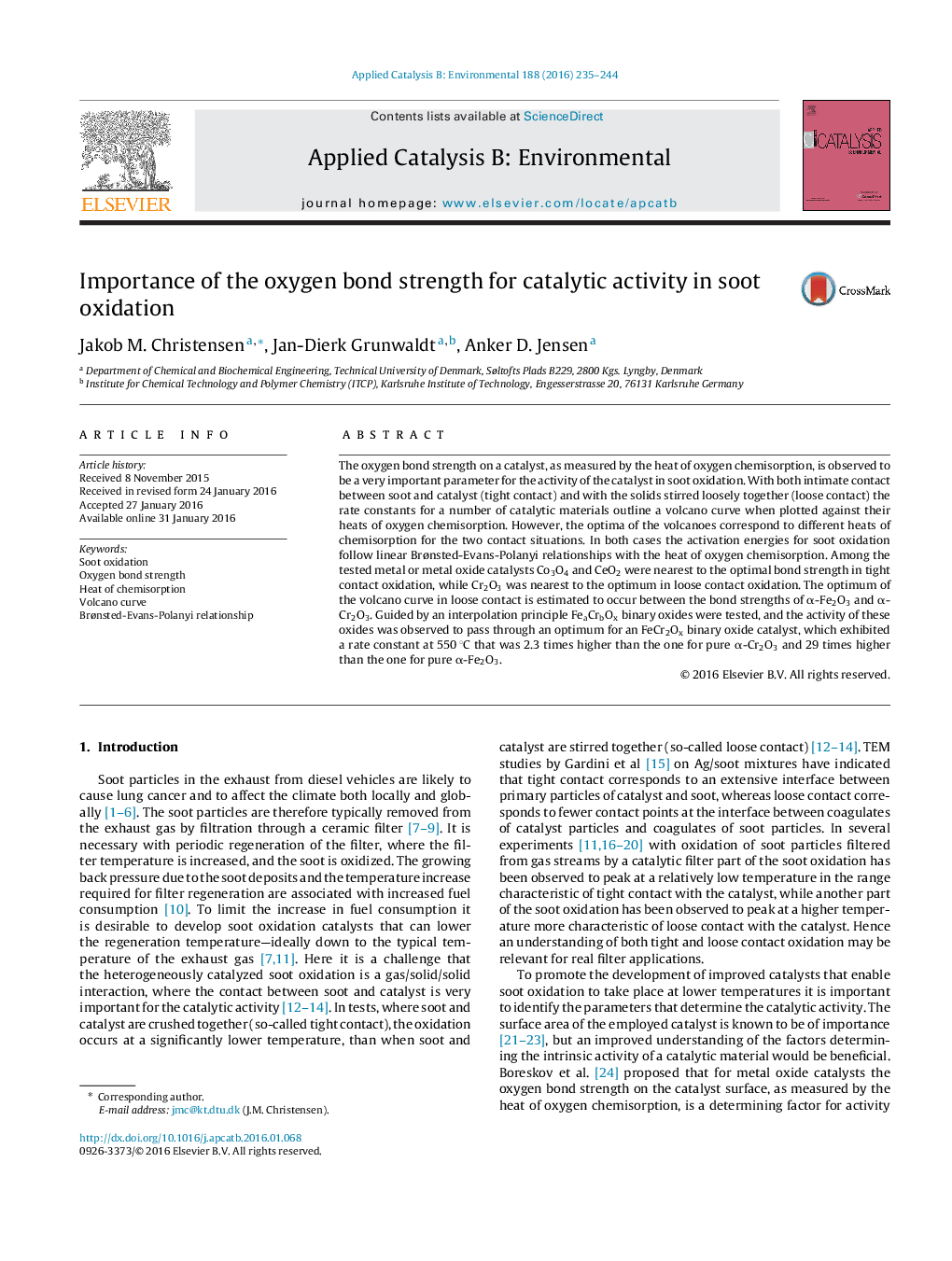| کد مقاله | کد نشریه | سال انتشار | مقاله انگلیسی | نسخه تمام متن |
|---|---|---|---|---|
| 45016 | 46393 | 2016 | 10 صفحه PDF | دانلود رایگان |
• The oxygen bond strength is found to be very important for the activity of a catalyst in soot oxidation.
• The activites of different catalysts outline two different volcano curves for intimate and loose contact.
• Linear Brønsted-Evans-Polanyi relationships are observed for both intimate contact and loose contact.
The oxygen bond strength on a catalyst, as measured by the heat of oxygen chemisorption, is observed to be a very important parameter for the activity of the catalyst in soot oxidation. With both intimate contact between soot and catalyst (tight contact) and with the solids stirred loosely together (loose contact) the rate constants for a number of catalytic materials outline a volcano curve when plotted against their heats of oxygen chemisorption. However, the optima of the volcanoes correspond to different heats of chemisorption for the two contact situations. In both cases the activation energies for soot oxidation follow linear Brønsted-Evans-Polanyi relationships with the heat of oxygen chemisorption. Among the tested metal or metal oxide catalysts Co3O4 and CeO2 were nearest to the optimal bond strength in tight contact oxidation, while Cr2O3 was nearest to the optimum in loose contact oxidation. The optimum of the volcano curve in loose contact is estimated to occur between the bond strengths of α-Fe2O3 and α-Cr2O3. Guided by an interpolation principle FeaCrbOx binary oxides were tested, and the activity of these oxides was observed to pass through an optimum for an FeCr2Ox binary oxide catalyst, which exhibited a rate constant at 550 °C that was 2.3 times higher than the one for pure α-Cr2O3 and 29 times higher than the one for pure α-Fe2O3.
Figure optionsDownload as PowerPoint slide
Journal: Applied Catalysis B: Environmental - Volume 188, 5 July 2016, Pages 235–244
